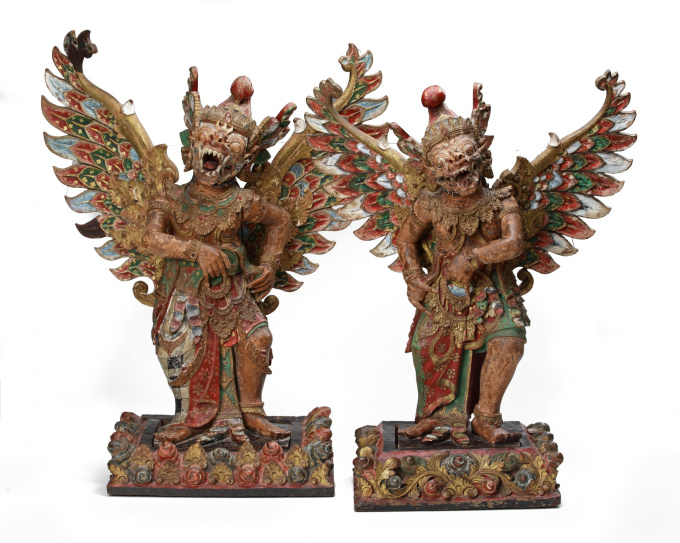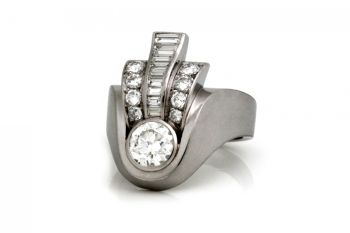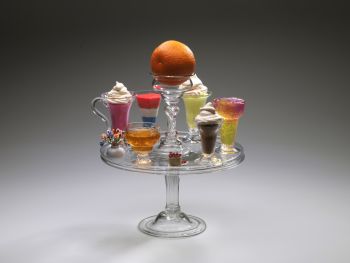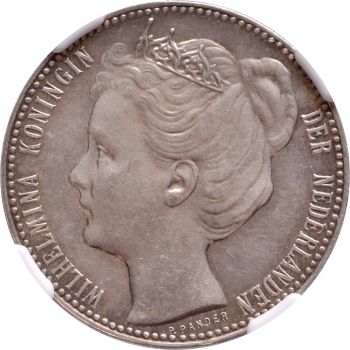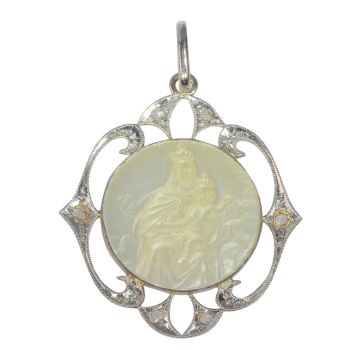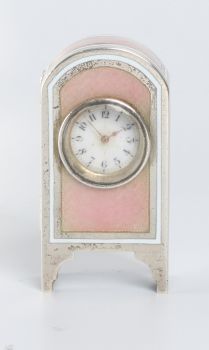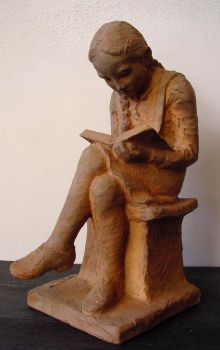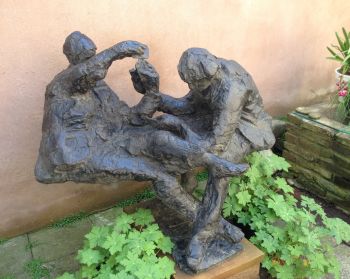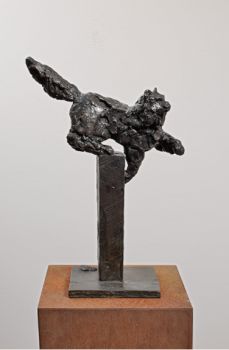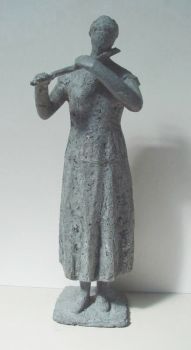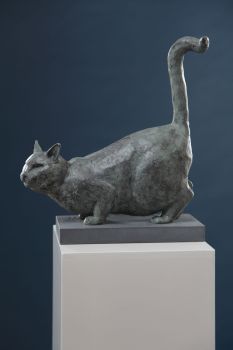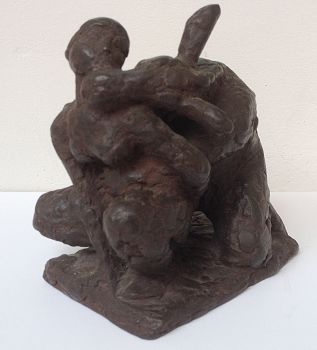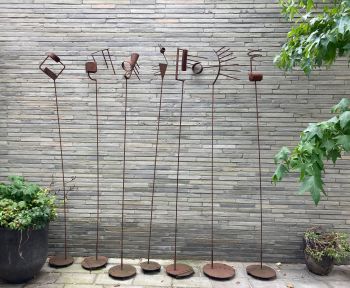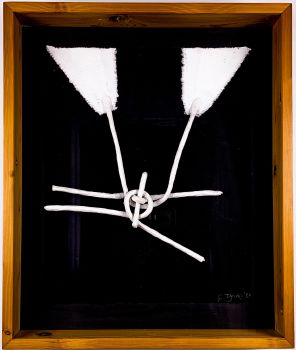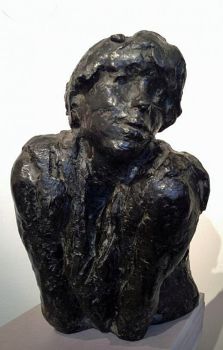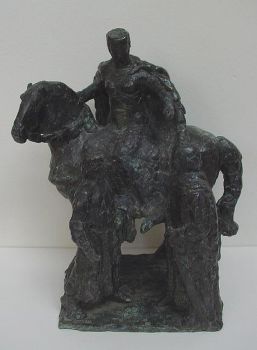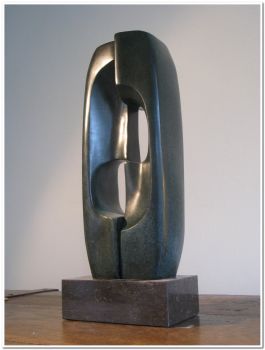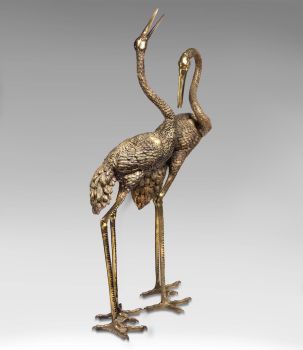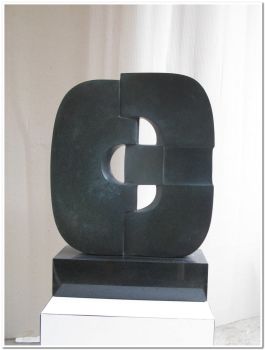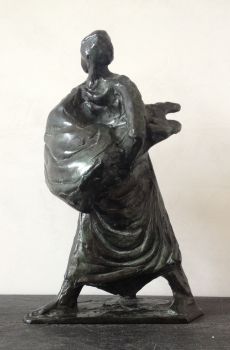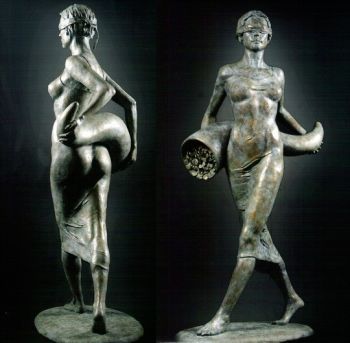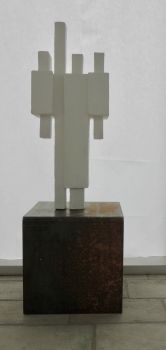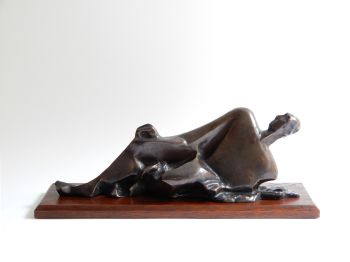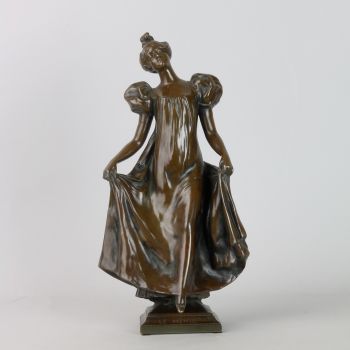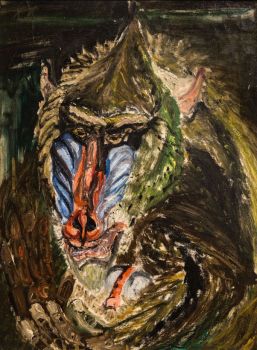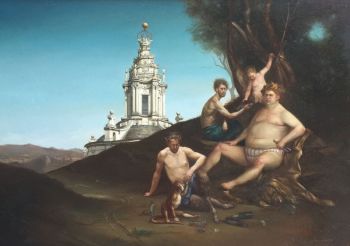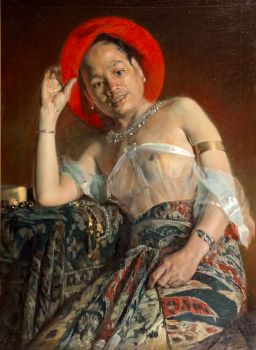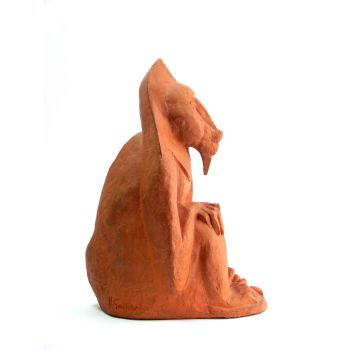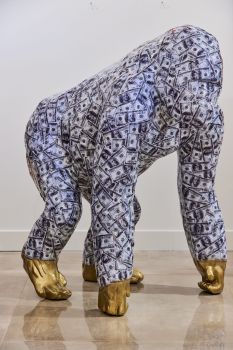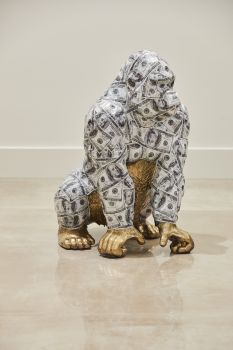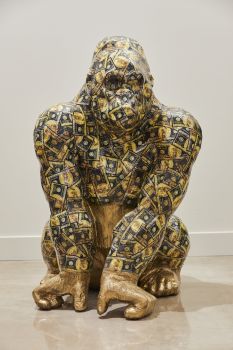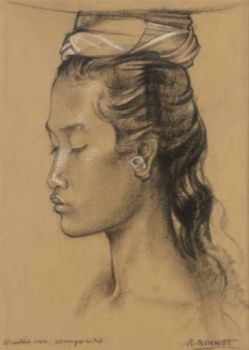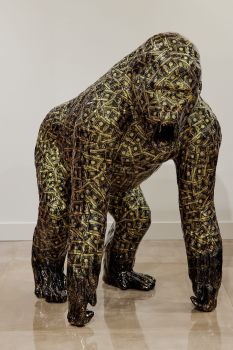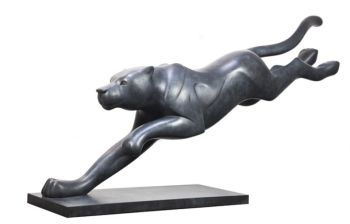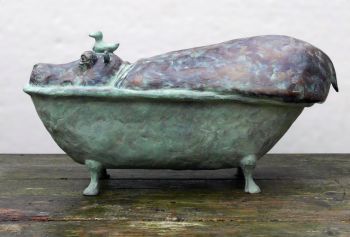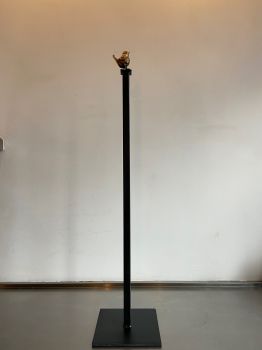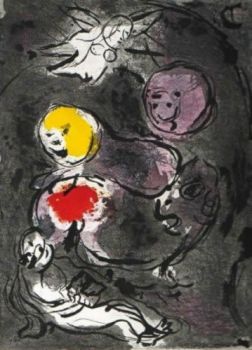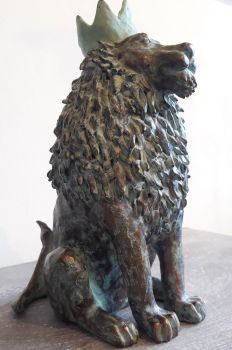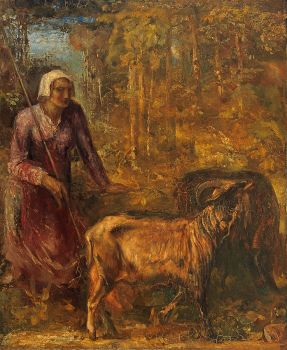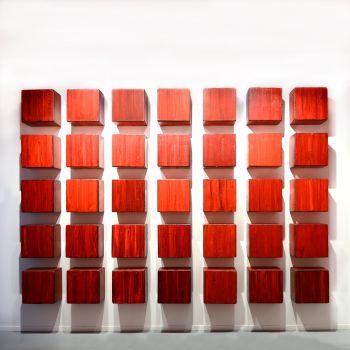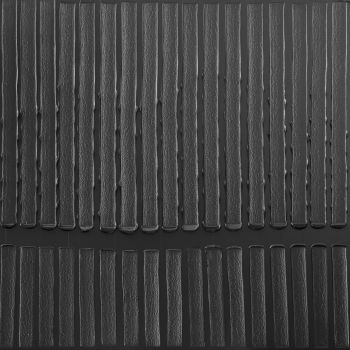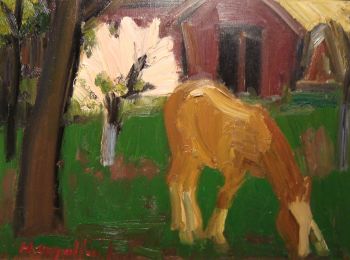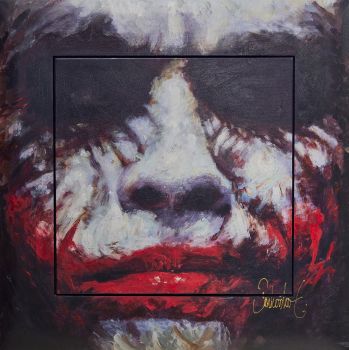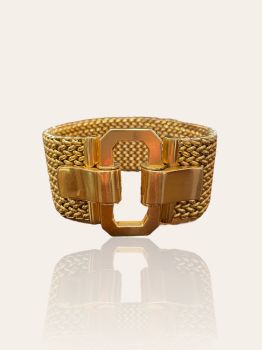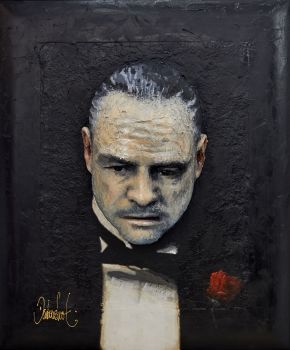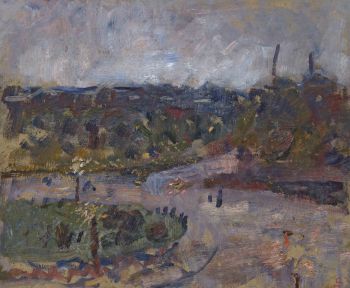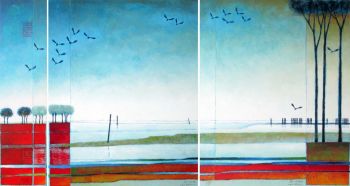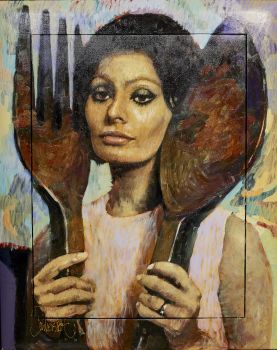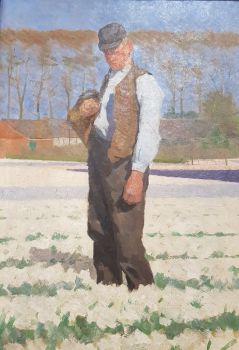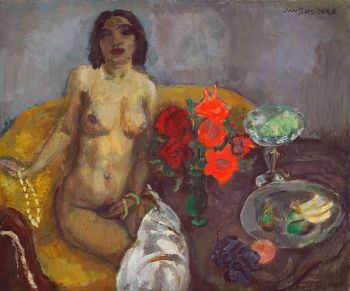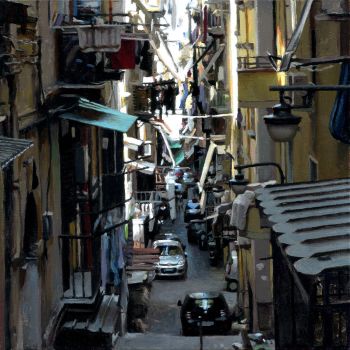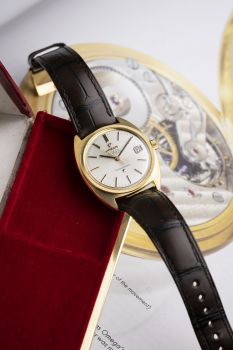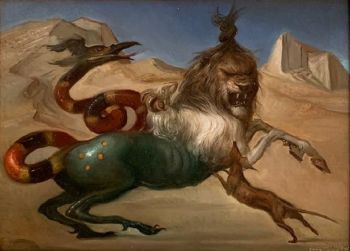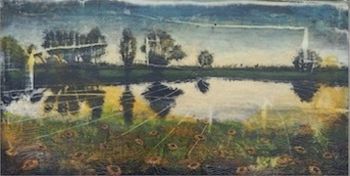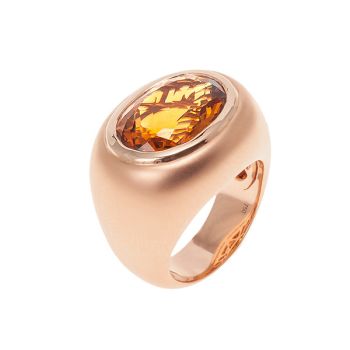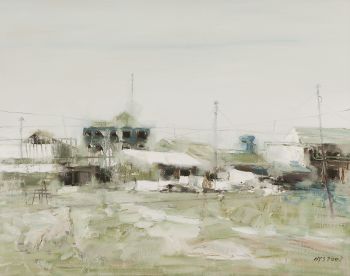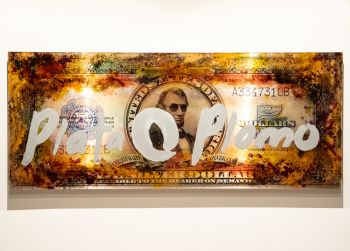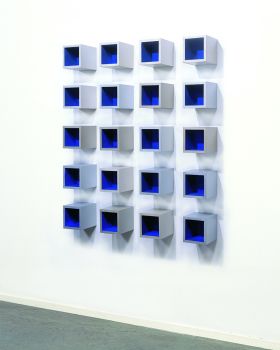Deux statues en bois polychrome, au nord de Bali, Singaraja, Buleleng Regence, fin du 19e siècle 1900
Artiste Inconnu
BoisBois de Nangka (Jacquier)PigmentOrPeindre
78 cm
ConditionMint
Actuellement indisponible via Gallerease
- Sur l'oeuvre d'artTwo polychrome wooden statues North Bali, Singaraja, Buleleng Regency, late 19th century
Nangka (jackfruit) wood and pigments and gold
Height: 78 cm and 70 cm (2)
These two winged statues represent the red monkey twins Sugriwa and Subali as they are called in Bali. However, in spite of being identical twins they have different fathers; Sugriwa’s father is Surya, the sun god and Subali’s Indra, the king of gods. Subali, the king of the vahana, the monkeys and bears, believes that his brother Sugriwa is plotting to steal his throne so he drives him away. Sugriwa is introduced by his friend Hanoman, the king of the white monkeys, to Rama who agrees to battle Subali on Sugriwa’s behalf in exchange for the promise that Sugriwa will help him invade Lanka to battle Rawana who has kidnapped his wife, Sita. Rama defeats and kills Subali who at the time of his death realizes that Sugriwa had no ill intentions against him and forgives him for his death. The pair represent both sibling rivalry and the ultimate revelation of the truth. These two statues belong to a class of statues made in the vicinity of Singaraja from about 1890 till 1920, when the were very popular among a growing number of colonials in north Bali. There are early 20th century photos of this type of statues being sold in Surabaya and colonial fairs.
A large number of Bali statues in Dutch museums belong to this class.
I am grateful to Bruce Carpenter for his assistance with this catalogue entry. - Sur l'artiste
Il peut arriver qu'un artiste ou un créateur soit inconnu.
Certaines œuvres ne doivent pas être déterminées par qui elles sont faites ou elles sont faites par (un groupe d') artisans. Les exemples sont des statues de l'Antiquité, des meubles, des miroirs ou des signatures qui ne sont pas claires ou lisibles, mais aussi certaines œuvres ne sont pas signées du tout.
Vous pouvez également trouver la description suivante :
•"Attribué à …." A leur avis probablement une oeuvre de l'artiste, au moins en partie
•« Atelier de …. ou « Atelier de » À leur avis, une œuvre exécutée dans l'atelier ou l'atelier de l'artiste, éventuellement sous sa direction
•« Cercle de… ». A leur avis une oeuvre de la période de l'artiste témoignant de son influence, étroitement associée à l'artiste mais pas forcément son élève
•« Style de … ». ou "Suiveur de ...." Selon eux, une œuvre exécutée dans le style de l'artiste mais pas nécessairement par un élève ; peut être contemporain ou presque contemporain
•« Manière de… ». A leur avis une oeuvre dans le style de l'artiste mais d'une date plus tardive
•"Après …." A leur avis une copie (quelle qu'en soit la date) d'une oeuvre de l'artiste
•« Signé… », « Daté… ». ou « Inscrit » À leur avis, l'œuvre a été signée/datée/inscrite par l'artiste. L'ajout d'un point d'interrogation indique un élément de doute
• "Avec signature ….", "Avec date ….", "Avec inscription …." ou "Porte signature/date/inscription" à leur avis la signature/date/inscription a été ajoutée par quelqu'un d'autre que l'artiste
Artwork details
Related artworks
- 1 - 4 / 12
Klaas II Mobach
Hanna Mobach, daughter of the sculptor Klaas Mobach, reading1950 - 1970
Prix sur demandeKunsthandel Pygmalion
1 - 4 / 24- 1 - 4 / 24
- 1 - 4 / 24

